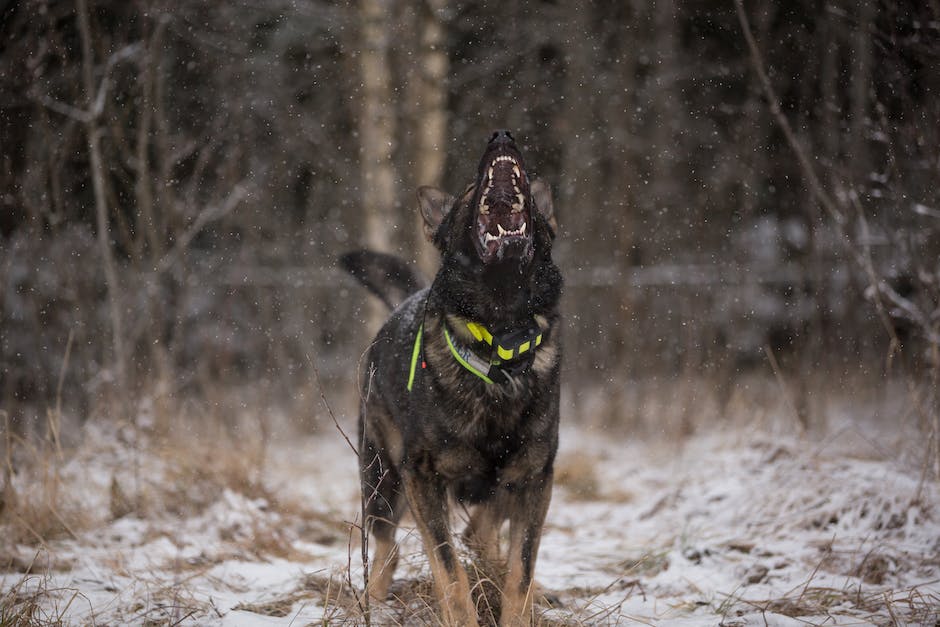Training Your Dog to Stop Barking at Strangers: The Essential Guide

In our fervor to understand the complexities of our faithful canine companions, one concern that often draws our attention is their proclivity to bark at strangers. This behavior goes beyond simple annoyance, revealing underlying issues such as territoriality, fear, or a lack of socialization. Thankfully, with a careful understanding of these triggers, and appropriate techniques to address them, we can help alleviate our furry friends’ stress and foster a calmer environment for everyone involved. From exploring the intricacies of dog behavior to delving into proper socialization techniques and effective training strategies, our journey will focus on comprehensive solutions to mitigate excessive barking.
Understanding Dog Behavior
Before we delve into understanding what causes this behavior, it’s important to remember that our dog’s barking is far from a manipulative ploy to annoy us. It is their own form of communication, expressing their fears, curiosity, or excitement. Whenever your dog barks excessively at strangers, decoding the triggers helps pacify their behavior.
- Fear or Uncertainty
- Territorial Instincts
- Lack of Proper Socialization
- Excitement or Overstimulation
Dogs have a fabulous ability to remember people and situations. Should they encounter strangers whom they perceive as menacing or threatening, they’re likely to bark. This alarm barking is often motivated by fear, anxiety, or uncertainty.
Sometimes, it’s as simple as natural instincts taking hold. Dogs are territorial creatures and barking is a way to communicate, “This is my house! Please back off!” Strangers invading their perceived territory can trigger their protective instincts, causing excessive barking. Sometimes your dog may thing they are the Alpha.
Lack of exposure to different people, places, and experiences can lead to an unhealthy fear of the unknown. When dogs are not adequately socialized, they may bark excessively at strangers as a response to anything unfamiliar.
Yes, your dog can also bark excessively when they’re simply thrilled or over-stimulated! Seeing a new person can cause excitement, and your furry friend can express this joy through incessant barking.
Now that we understand some common triggers, here are a few strategies:
- Training: To curtail excessive barking, it’s imperative to conduct consistent positive reinforcement training. Shower treats, praises, or pats on their head when they resist barking at strangers.
- Controlled Exposure: Gradually exposing your dog to different people in controlled environments reduces their anxiety around strangers.
- Behavior Modification Techniques: Techniques like desensitization (gradual exposure to the thing they fear until it no longer sparks fear) and counter-conditioning (changing their emotional response to the trigger) can also be helpful.
- Professional Guidance: When all else fails, there’s no shame in seeking help from professional pet behaviorists.
It’s essential to remember each dog is unique, mirroring our own individuality. Every situation calls for understanding, patience, love, and the occasional bit of professional help. So, here’s to befriending their fears and embracing their eccentricities—after all, they are what make our fur friends who they are!

Proper Socialization Techniques
Welcoming a dog into the family fold is incredibly rewarding; they’re not called ‘man’s best friend’ for nothing! However, sometimes even the most well-behaved pups can cause a minor disturbance when encountering a new face. If you’ve already addressed the primary causes of your sweet pup’s excessive barking, such as fear, excitement, lack of socialization, and territorial instincts, there are extra measures you can take to help these adorable canines feel more comfortable around strangers.
1. Positive Reinforcement:
Dogs, like children, respond well to rewards. Whenever your dog behaves appropriately around strangers, make sure to reward it with treats, praise, or petting. This way, the dog soon learns that behaving well around strangers results in delightful outcomes. Always remember, your pooch should associate the presence of strangers with positive experiences.
2. Setting Boundaries:
Establishing rules and boundaries is equally crucial. Make sure your dog is aware that they have their own special area where they can retreat to whenever strangers visit. A dog bed, crate, or specific room can act as a haven for your pet. This safe space will give your dog an additional feeling of security and control.
3. Controlled Introduction:
Try to avoid overwhelming situations. For dogs, meeting a crowd of new people at once can be quite daunting. Take a measured approach by gradually introducing your dog to one or two strangers at a time. The controlled introduction allows your dog to get familiar gradually and makes the process less stressful.
4. Instilling Confidence:
Strive to build your pup’s confidence. Regularly engaging in various activities and games that promote agility and obedience could help your dog gain the necessary confidence to handle new situations and people.
5. Create a Calm Environment:
Dogs pick up on human emotions. If the family is panicking or anxious, the dog tends to mirror those feelings. Try to create a calm and serene environment at home, particularly when expecting visitors.
6. Consistency is Key:
Stick to these patterns and make them part of your dog’s routine. Consistency in training, as well as exposure to strangers, will reassure your four-legged friend, encouraging them to better control their reactions towards unfamiliar faces.
Remember, every dog is unique and responds differently to strangers. Progress may be slow, but do not let impatience get the best of you. As a bushel of love and joy in your home, remember always to be understanding and patient with your pet. Good luck, and happy parenting (to both your two-legged and four-legged kids)!

Training Strategies to Control Barking
Managing your fur baby’s barking habits might sound daunting, but there’s a treasure trove of effective training methods that can be a huge help. The previously discussed topics namely fear, territorial instincts, lack of socialization, overstimulation, and professional guidance are all critical pieces to understanding the puzzle of excessive barking. But let’s add another piece to this puzzle by diving deep into some additional tips and tricks that every pet parent should have up their sleeve.
Positive reinforcement is the way to go when aiming to manage barking. Canines respond wonderfully to this method, wherein they are rewarded for good behavior. This helps them understand what is expected from them. It could be a simple pat, word of praise, or a small treat whenever they remain quiet in a typically bark-inducing scenario.
Boundary setting is another must in your toolbox. Dogs are pack animals and naturally respect leadership; they thrive on structure and knowing their place in the hierarchy. Establish and consistently enforce the house rules. For example, designate specific “quiet zones” within the house where barking is off-limits.
Another clever tactic is the controlled introduction approach. Gradually exposing your beloved pet to new faces will get them accustomed to strangers, thus potentially curbing barking habits directed towards new people or other animals.
Instilling confidence in your canine buddy cannot be overstressed. A confident dog is a calm dog, and a calm dog is less likely to bark compulsively. Encourage confidence-building activities through things like gentle and positive social encounters, patient training, and even dog-friendly games or agility courses.
A calm environment is conducive to a quieter pooch. Utilizing calming aids such as dog-friendly aromatherapy diffusers, specially designed pet music, or anxiety wraps can help create a serene atmosphere, which is more likely to keep your dog from barking excessively.
Finally, remember to be consistent in implementing these training methods. Dogs thrive on predictability, so it is crucial to ensure uniformity in the training process across all family members. This way, your fur baby will understand what is expected from them and this will aid in reducing barking.
Training a dog’s barking habits is a noble but taxing commitment, but these tips are a great addition to any dog parent’s toolkit. Hopefully, they will help you and your wonderful pup navigate the path to more harmonious, bark-free home life. Each dog is truly a unique individual, which makes the challenge even more special; after all, sharing your home with a happy, well-behaved furry friend is absolutely worth the effort!

Ultimately, managing your dog’s barking is a meticulous process that involves understanding their behavior and incorporating strategic training techniques. Armed with this knowledge, we can better navigate the challenges presented, fostering a healthier atmosphere of trust and understanding between our pets and a world full of strangers. As we follow the path of proper socialization strategies and reinforcement methods, we will not only help our dogs overcome their fear but also build a deeper bond with our four-legged companions. Together, let’s open the door to a more tranquil and harmonious interaction for our loyal canine family members.


